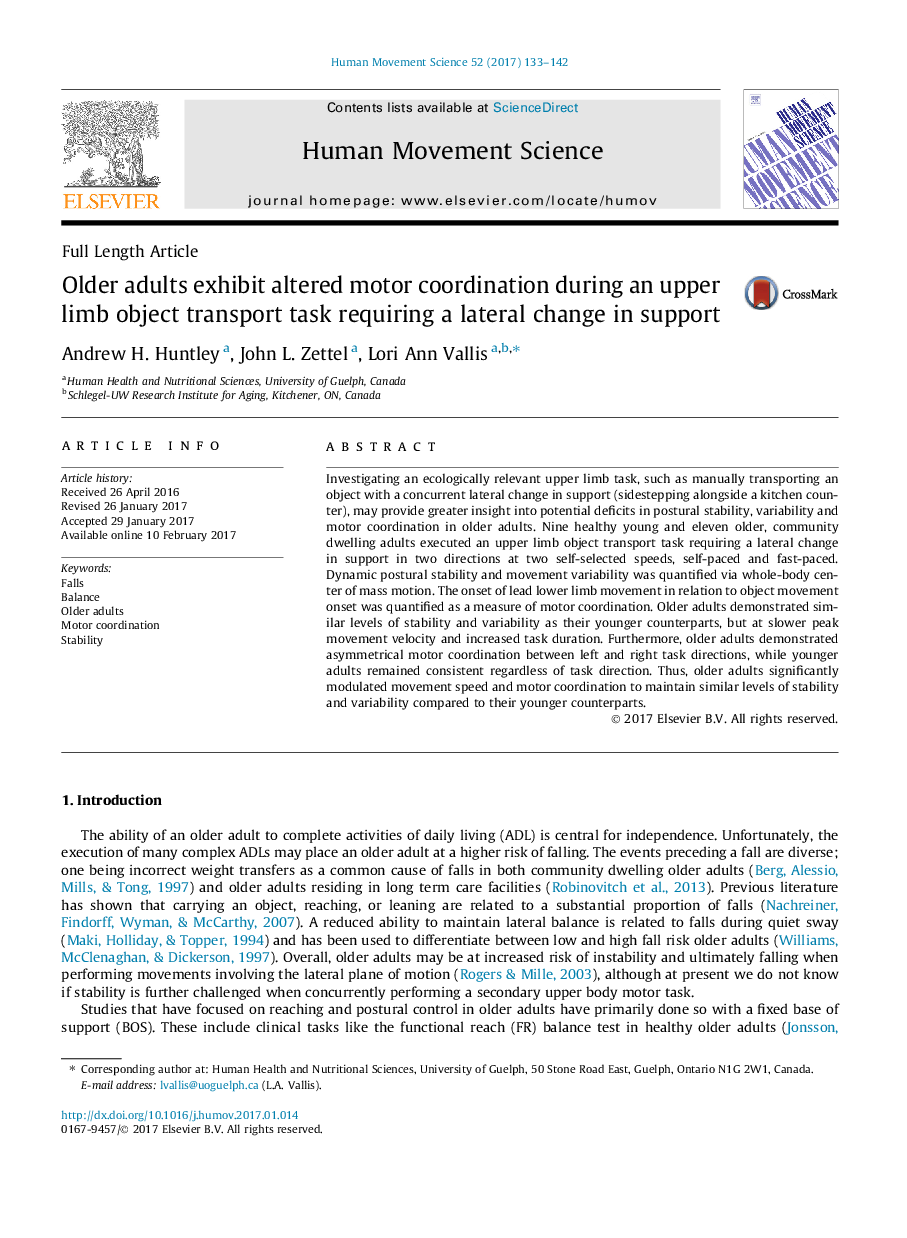| Article ID | Journal | Published Year | Pages | File Type |
|---|---|---|---|---|
| 5042062 | Human Movement Science | 2017 | 10 Pages |
â¢Young and older adults performed object transport task with lateral change in support.â¢Older adults exhibited similar levels of stability and variability as young adults.â¢Asymmetrical movement direction coordination by older adults.â¢Upper and lower limb task combined elucidates coordination deficits in older adults.
Investigating an ecologically relevant upper limb task, such as manually transporting an object with a concurrent lateral change in support (sidestepping alongside a kitchen counter), may provide greater insight into potential deficits in postural stability, variability and motor coordination in older adults. Nine healthy young and eleven older, community dwelling adults executed an upper limb object transport task requiring a lateral change in support in two directions at two self-selected speeds, self-paced and fast-paced. Dynamic postural stability and movement variability was quantified via whole-body center of mass motion. The onset of lead lower limb movement in relation to object movement onset was quantified as a measure of motor coordination. Older adults demonstrated similar levels of stability and variability as their younger counterparts, but at slower peak movement velocity and increased task duration. Furthermore, older adults demonstrated asymmetrical motor coordination between left and right task directions, while younger adults remained consistent regardless of task direction. Thus, older adults significantly modulated movement speed and motor coordination to maintain similar levels of stability and variability compared to their younger counterparts.
